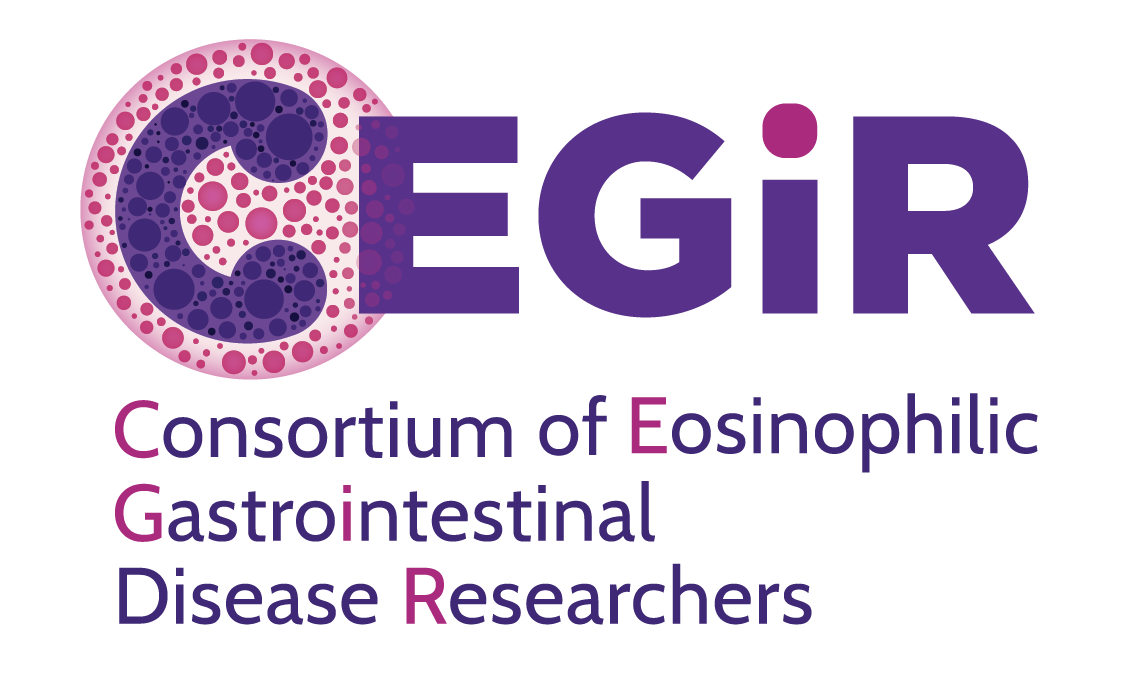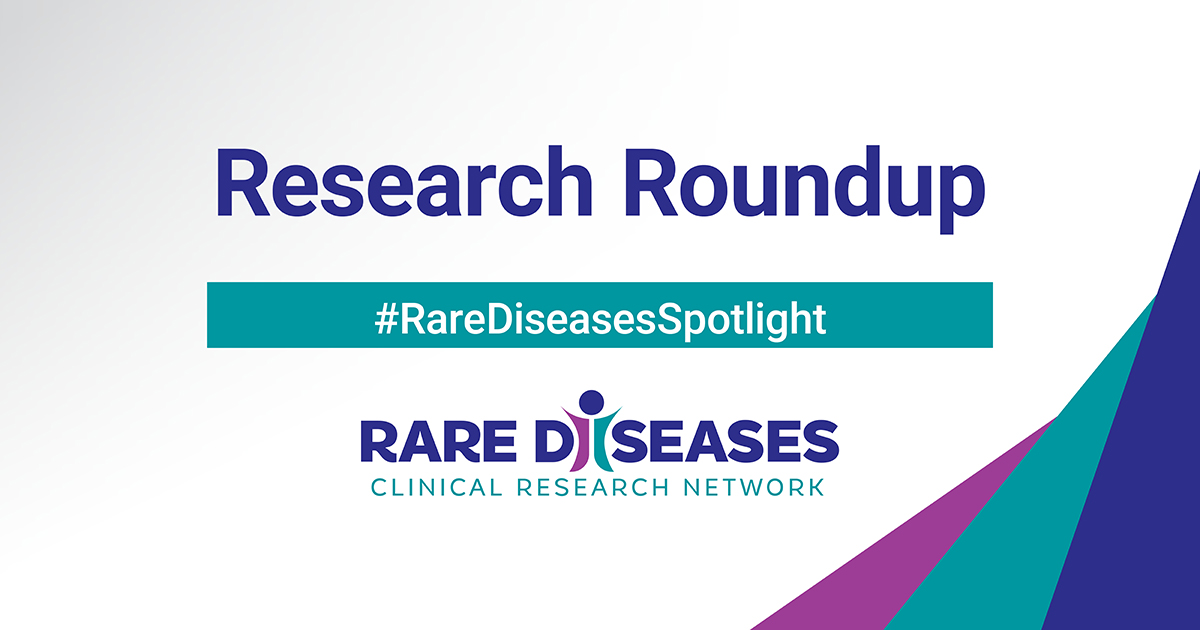Each month, we share summaries of recent Rare Diseases Clinical Research Network (RDCRN) grant-funded publications. Catch up on the latest RDCRN research below.
Jump to:
- Clinical Research in ALS and Related Disorders for Therapeutic Development (CReATe)
- Consortium of Eosinophilic Gastrointestinal Disease Researchers (CEGIR)
- Global Leukodystrophy Initiative Clinical Trials Network (GLIA-CTN)
- Lysosomal Disease Network (LDN)
- Myasthenia Gravis Rare Disease Network (MGNet)
Clinical Research in ALS and Related Disorders for Therapeutic Development (CReATe)
Defining Cognitive Impairment in Patients with ALS
Amyotrophic lateral sclerosis (ALS) is a multi-system disorder characterized primarily by motor neuron degeneration. Increasing evidence, however, suggests that ALS may also be accompanied by cognitive dysfunction, which is associated with reduced survival and functional decline. However, statistically appropriate criteria for establishing cognitive impairment in ALS are lacking.
Using control data from healthy adults enrolled through three North American cohorts and published UK-based normative data, researchers evaluated two empirical approaches for defining cognitive impairment: quantile regression (QR) and the traditional two standard deviation (2SD) cutoff.
Results indicate that the choice of normative cohort has a substantial impact on defining cognitive impairment in ALS and that the choice of statistical method is also important. This study establishes normative Edinburgh Cognitive and Behavioral ALS Screen (ECAS) thresholds for determining whether ALS patients in the North American population have cognitive impairment.
Consortium of Eosinophilic Gastrointestinal Disease Researchers (CEGIR)
Endothelial TSPAN12 Promotes Fibrostenosis in Eosinophilic Esophagitis
Eosinophilic esophagitis (EoE) is a chronic, antigen-mediated immunologic disease that can progress to fibrostenosis, but the molecular pathogenesis of fibrostenotic EoE is not well understood. This study found that endothelial TSPAN12 contributes to fibrostenotic EoE and is the first molecular correlate of esophageal diameter. These findings provide new insight into previously underrecognized roles of the endothelium in disease pathogenesis. Anti–IL-13 therapy may improve fibrostenotic EoE through normalizing TSPAN12 levels.
Web-Based Tool Predicts Lamina Propria Fibrosis in Eosinophilic Esophagitis
Eosinophilic esophagitis (EoE) is a chronic inflammatory disease of the esophagus that occurs when certain white blood cells known as eosinophils gather in large numbers in the esophagus, causing injury and irritation. Approximately half of esophageal biopsies from patients with EoE contain inadequate lamina propia (LP), a layer of connective tissue separating the innermost layer of epithelial cells from a layer of smooth muscle tissue. Insufficient LP makes it impossible to determine the LP fibrosis (LPF), which provides important early evidence of esophageal remodeling and serious adverse events of EoE.
In this study, researchers aimed to develop and validate a web-based tool to predict LPF in esophageal biopsies with inadequate LP. To build the models, the team used demographic and clinical data from patients with EoE participating in a CEGIR observational study. Next, they identified variables strongly associated with LPF and developed models to predict grade and stage of LPF. Results show 82% accuracy of the grade model in predicting the presence of LPF in an external validation data set. Study authors note that these predictive models can be easily used in the clinical setting to include LPF in clinical decisions and determine its effect on treatment outcomes.
Validating Self-Reported Diagnosis of Patients with Eosinophilic Gastrointestinal Disorders
In this letter to the editor, researchers describe their work to validate patient-reported data supplied to the CEGIR contact registry. The team compared information from patients—including diagnoses, procedures, and symptoms of eosinophilic gastrointestinal diseases (EGIDs)—with physician and lab reports. Researchers found 100% agreement between participant-reported and physician-reported diagnosis of EGIDs. Among the 56% of participants with available pathology reports, the team found 100% agreement between patient and physician reports. The team also found high agreement between patient and physician reports for the subtype of EGIDs, history of upper endoscopy, food impaction, esophageal dilation, and colonoscopy.
“Validation of the CEGIR contact registry data is important because it supports the high level of accuracy of patient-reported data in this cohort,” says lead study author Girish Hiremath, MD, MPH, of Vanderbilt University Medical Center. “This in turn strengthens the credibility of self-reported data in this registry, which may be used for future research to help us to better understand EGIDs.”
Study Shows Diagnostic Merits of the Eosinophilic Esophagitis Diagnostic Panel
Eosinophilic esophagitis (EoE) is characterized by immune cells called eosinophils building up in the esophagus, which may cause polyps, tissue break down, inflammation, and ulcers. EoE is a histologically "patchy" disease with uneven eosinophil distribution along the esophagus, which causes difficulty in analyzing endoscopic biopsy samples, especially when biopsy samples are limited to only the distal esophagus.
In this study, researchers investigated whether molecular mRNA profiling of a distal esophageal biopsy sample predicts eosinophilia in the proximal esophagus. Using esophageal biopsy samples from EoE patients, researchers assessed distal and proximal eosinophil counts and molecular profiles with the EoE Diagnostic Panel (EDP).
Results showed that EDP analysis of a single distal esophageal biopsy sample predicts remote inflammation in patients with spatially heterogeneous eosinophilia, as well as disease relapse in patients with histologic remission. Authors note that these results provide diagnostic merit and predictive medicine capacity for molecular diagnosis of EoE.
Core Outcome Set Facilitates Comparison of Eosinophilic Esophagitis Treatments
Multiple novel therapies are currently in development for eosinophilic esophagitis (EoE), an inflammatory disease of the esophagus. Harmonization of outcome measures will aid in comparing the efficacy of different treatments.
In this study, researchers aimed to develop a core outcome set (COS) for controlled and observational studies of pharmacologic and diet interventions in patients with EoE. Through interdisciplinary collaboration involving global stakeholders, they developed a COS consisting of four outcome domains (histopathology, endoscopy, patient-reported symptoms, and EoE-specific quality of life) with 33 outcome measures.
Authors note that the COS can be applied to adult and pediatric studies of pharmacologic and diet therapies for EoE, facilitating meaningful treatment comparisons and improving the quality of data synthesis.
Global Leukodystrophy Initiative Clinical Trials Network (GLIA-CTN)
Wearable Sensors Detect Ataxia in LBSL Patients During Remote Assessments
Leukoencephalopathy with brainstem and spinal cord involvement and lactate elevation (LBSL) is a rare type of leukodystrophy (a group of progressive, metabolic, genetic diseases that affect the brain, spinal cord and often the peripheral nerves). LBSL is characterized by a range of neurological issues, including motor impairment and progressive ataxia.
In this study, researchers explored the feasibility of remotely collecting quantitative gait and balance measures in LBSL. Using wearable accelerometers and the scale for the assessment and rating of ataxia (SARA), the team assessed gait and postural sway in LBSL and control participants' homes through video conferencing.
Researchers found that wearable accelerometers are valid and sensitive for detecting ataxia in LBSL patients during remote assessments. Study authors note that this approach can be applied to related rare diseases that feature ataxia.
Lysosomal Disease Network (LDN)
Impact of Enzyme Replacement Therapy on Cells Affected by Fabry Disease
Fabry disease (FD) is a lysosomal storage disorder caused by an abnormal enzyme that cannot break down globotriasylceramides (cell surface receptors containing fats with sugar molecules attached).
In this study, researchers investigated the impact of enzyme replacement therapy (ERT) on cardiomyocytes (cardiac muscle cells) and intestinal cells affected by FD. The team evaluated six patients with FD before and after two years of ERT.
Results suggest that human cells affected by FD may respond differently to ERT. While cardiomyocytes retain their globotriaosylceramide (GL3) content after 2 years of treatment, gastrointestinal cells show GL3 removal with recovery of function. Authors note that this divergent response may be related to differences in cellular turnover and tissue insulin-like growth factor 2 receptor (IGF-II-R) expression.
Myasthenia Gravis Rare Disease Network (MGNet)
Survey Highlights Impact of COVID-19 Pandemic on Patients with Myasthenia Gravis
The Covid-19 pandemic has greatly impacted the world and demonstrated the inadequacy of health care in the United States. MGNet researchers conducted a cross-sectional, online survey to assess the impact of the pandemic on rare disease patients, including those with myasthenia gravis (MG).
The web-based survey utilized questions to assess the impact of the pandemic on patients' symptoms, access to healthcare, and medication use. More than 3,000 people participated, including 594 self-reported MG patients. Researchers found no increase in symptoms of MG after the beginning of the pandemic. However, patients reported worsening of pre-existing symptoms.
Overall, survey results reflect deficiencies in US healthcare demonstrated by the pandemic. Researchers continue to survey the rare disease community to understand the ongoing impact of the Covid-19 pandemic.
The Rare Diseases Clinical Research Network (RDCRN) is funded by the National Institutes of Health (NIH) and led by the National Center for Advancing Translational Sciences (NCATS) through its Division of Rare Diseases Research Innovation (DRDRI). Now in its fourth five-year funding cycle, RDCRN is a partnership with funding and programmatic support provided by Institutes, Centers, and Offices across NIH, including the National Institute of Neurological Disorders and Stroke, the National Institute of Allergy and Infectious Diseases, the National Institute of Diabetes and Digestive and Kidney Diseases, the Eunice Kennedy Shriver National Institute of Child Health and Human Development, the National Institute of Arthritis and Musculoskeletal and Skin Diseases, the National Heart, Lung, and Blood Institute, the National Institute of Dental and Craniofacial Research, the National Institute of Mental Health, and the Office of Dietary Supplements.


